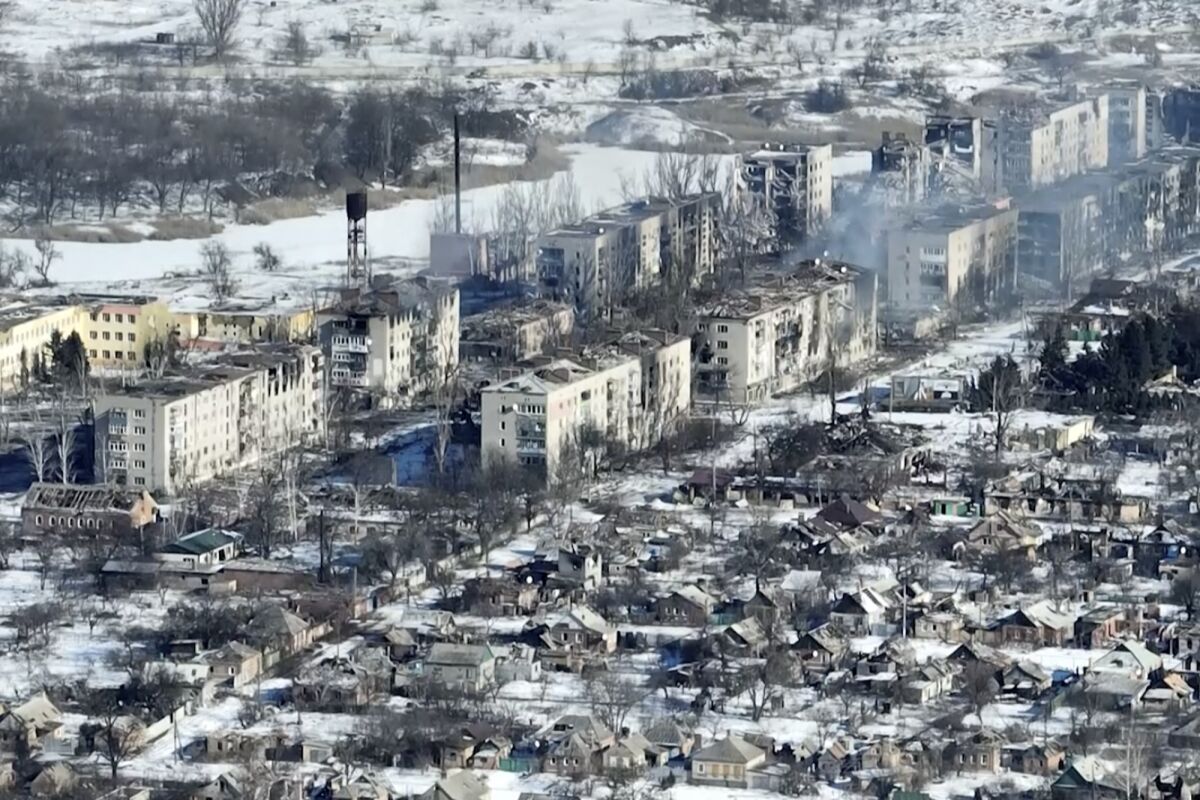Mission Creep
As I mentioned in last weeks piece, the Battle of Bakhmut has come to mean quite a bit for both the Russian and Ukrainian forces there. They have spent over half a year in constant conflict over the city. Of a pre-war population of 70,000, only about 2,500 remain (and that has likely already gone down). As we speak, Wagner forces are attempting to storm the city. The Russian forces as a whole already have much of the city surrounded, with only one small country road serving to supply the Ukrainian forces defending the city.
Mainstream media sources, normally incredibly bullish about Ukrainian chances, are noting that the city’s defenders are being worn down. Looking at an image of where the Russian forces are, now seems like a really good time for Ukrainian troops to pull out. Frankly, it seemed like the Ukrainians should have been planning to pull out a month ago. Instead, it seems, they are doubling down. They are sending more troops, more supplies. To the point, that the Washington Post, ruminates that they might have a shortage of weapons and trained troops for this Spring’s Ukrainian offensive into Zaporizhzhia.
What’s worse, it’s not obvious that Bakhmut has the military value that both sides seem to be insisting on. The Ukrainian command has indicated that it fears that a Russian victory at Bakhmut could lead to it becoming a springboard for Russia to advance west towards Kramatorsk and Slovyansk. However, groups like the Pentagon and the Institute for the Study of War have made noises that this isn’t the case; that the Russians lack the ability to maintain momentum. As I have said previously, I take all these things with a grain of salt. However, in this particular case, this seems believable. Or rather, even if Bakhmut could serve as a springboard, is it really worth several thousand Ukrainians (troops they can ill afford to lose) potentially getting surrounded?
So the question is, why? Why are both sides fighting so hard for this? I think there are several possibilities. Again this is all coming from a nerd who just reads too much, but here is my take
I think there are three likely explanations for both sides’ adamance about taking Bakhmut. Firstly, it the previously stated springboard plan. Taking the city could allow the Russians to threaten Kramatorsk and Slovyansk, but since the Fall offensive in Kharkiv, the Russians lack the manpower and capabilities to press such an advance. Below is the assessment given by the UK Ministry of Defence.
However, as reported by the Kyiv Independent, German Intelligence seems more worried about a potential Russian advance along this axis. Again we should take everything said with a grain of salt.
This helpfully brings us to the second reason both sides are fighting so hard; attrition. Both sides believe that they can attrit the other’s forces enough to at the very least delay any serious offensive. Wagner boss Yevgeny Prigozhin recently stated as much in an interview. The Russian aim in Bakhmut is to turn into a meatgrinder for Ukrainian troops. Various Western sources have stated similar things. The Ukrainian government consistently comes out with statements declaring that the Russians are losing hundreds or even a thousand soldiers a day fighting in Bakhmut.
The estimates for the casualties, like the rest of the war, are spotty to put it lightly. As I said in last week's post, everybody is lying to one extent or another because no one has an incentive to actually tell the truth. One estimate for the Russian side is that they’ve taken 20,000-30,000 casualties over the course of the battle. However, this could be an extreme overestimation by the side that has every incentive to claim that their opponent is two steps from breaking.
As for the Ukrainians, I’ve heard that of the 20,000 or so troops that defended Bakhmut, only 4,000 remain. Whether that means that the Ukrainians have been pulling large troops out, thus indicating perhaps lower casualties, or that is just the level of attrition, who knows? Except the Ukrainian government, but they aren’t telling so…
This leads to the third reason, the need for victory. It could be very easily argued that both sides simply need this victory. For the Russian side, they were humiliated at the beginning of the war when they were forced to give up the siege of Ukraine’s capital and northern cities. And again this past fall when they lost the only major city that they had taken since the invasion (Kherson) and lost all of what they gained in Kharkiv Oblast. They NEED this to work for them. For this reason, Bakhmut has become the symbol, the litmus test, for whether there is any strength left in Russian arms.
For Ukraine, this battle needs to, in a proverbial sense, go their way to keep the hope of Ukrainian victory alive. This is the difference between whether they are a Finland, who inflicted massive casualties on the Soviet Union in the Winter War (1939) but ultimately were washed away by the vastness of Soviet forces. Or if Ukraine is a more successful Afghanistan, which sapped a waning Soviet Union of much of its remaining strength and, most importantly, legitimacy before it ultimately was forced to pull out of the country. For both, Bakhmut stands as a symbol.
Connected to this could be a sunk cost fallacy for both sides. The thinking may well go, “we have lost too much to just pack up and leave now.” As much as we might see militaries as being somehow mechanical and ultimately rational behemoths, remember; they are run just as much by the emotions and egos of men as any other area of life. This just happens to be dealing with masses of human lives. Fundamentally, I think it is a combination of all these options.
As a history nerd, this conflict has so many parallels in history. The truism that history repeats itself is abundantly false, however, “it does rhyme.” The war as a whole reminds me more firmly of the First World War than the Second, despite the efforts of both sides to frame it as a fight against resurgent fascism. The war as far as I can tell is not so much ideological as civilizational. Russia sees Ukraine as an inextricable part of Russia or at the very least the historical region of Novorosia. In fact, Putin seems to genuinely believe that the Russian, Belarussian, and Ukrainian people are a triune people. Always together, never apart. This is a war wherein, Russia sees itself as the victim of history. That it is surrounded and under threat, in effect a continuance of the Cold War view of the West.
Ukraine’s case is much simpler. They are a unique people, with a unique history separate from that of Russia and for that reason they have a right to exist. They have come to see Russia as the colonizer. The usurper. While undoubtedly true, the narrative (on both sides) is fundamentally more complicated. Ukraine and Russia are fundamentally connected historically. Russian civilization began in Kyiv (the Kievan Rus). The differences and uniqueness formed in not only Ukraine but also in Belarus are the results of the long battles of civilization that have been going on for millennia. For example, the Belarusian language is a combination of Polish and Russian. In Ukraine, the East is far more Russian-speaking and Orthodox, while the West is firmly Ukrainian (also related to the Polish language) and Catholic. Ukraine originally meant in both Polish and Russian, “borderland.” That gives us a very clear idea of what their history has entailed.
So circling back (how’s it going Psaki?) to the question of Bakhmut, I would argue that this is either a Stalingrad for the Ukrainians, wherein their stand here portends doom down the road as they waste precious resources on a fight that is more symbolic than practical. Or is the siege of Verdun for the Russians, wherein an attempt to drain the resources of the enemy has backfired, costing them more than the enemy.
Ultimately this is all speculation. I truly do not know how this war will turn out. Although I imagine we will get some vision of it when Spring arrives and with it new offensives. I will likely look into the situation in more depth in the next couple of weeks.
Post-script: Many outlets are now reporting that the pace of the Russian advance is slowing. The ISW argues that this is because the Russians are now directing more resources elsewhere, particularly to the taking of Avdiivka, which showing a somewhat similar pattern to the siege of Bakhmut. Many outlets are reporting that the Ukrainians are vowing a counterattack to relieve Bakhmut. We will see. Western sources are already reporting that the Russians are short of men and material. Again we will see.


Comments
Post a Comment